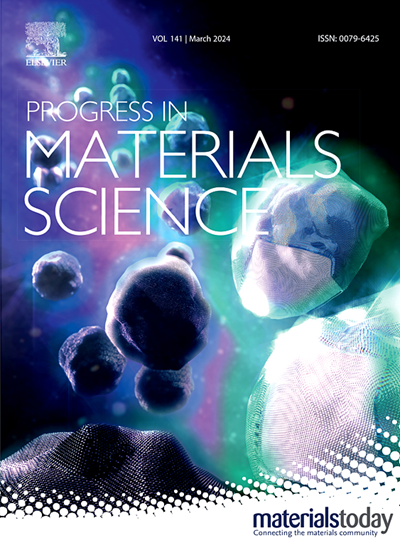锂电池固态电解质的最新进展与挑战
IF 40
1区 材料科学
Q1 MATERIALS SCIENCE, MULTIDISCIPLINARY
引用次数: 0
摘要
全固态锂电池(ASSLBs)作为新一代储能技术,具有安全性好、稳定性好、能量密度高等优点,备受关注。然而,目前的研究主要仍然局限于实验室规模的演示,有限的转化为可扩展的技术解决方案。解决学术界与行业之间的这种脱节,对于释放assb的商业可行性至关重要。这篇综述的重点是通过系统地分析固态电解质(ssi)的进展来弥补这一差距,固态电解质是ASSLB技术的基石。我们深入研究了各种sse的结构特征、离子传输机制和性能指标,并对改性策略进行了全面总结。除了理论进步,我们强调这些策略在解决能量密度限制、界面不稳定性和安全问题方面的实际意义。这篇综述的一个显著特点在于其对早期ASSLB产业化障碍的多维分析,整合了从材料合成可扩展性、电极加工创新、设备级性能验证、先进表征方法和特定应用要求等方面的观点。这项工作不仅描绘了当前的研究前沿,还为学术界和工业界的合作建立了可操作的指导方针,为科学家提供了有针对性的创新路线图,并为企业提供了基于证据的见解,以简化技术开发和商业化战略。本文章由计算机程序翻译,如有差异,请以英文原文为准。
Recent advances and remaining challenges of solid-state electrolytes for lithium batteries
All-solid-state lithium batteries (ASSLBs) have garnered significant attention as a next-generation energy storage technology, providing superior safety, enhanced stability, and high energy density. However, current research predominantly remains confined to laboratory-scale demonstrations, with limited translation into scalable technological solutions. Addressing this academia-industry disconnect is critical to unlocking the commercial viability of ASSLBs. This review focuses on bridging this gap by systematically analyzing advancements in solid-state electrolytes (SSEs)—the cornerstone of ASSLB technology. We delve into the structural characteristics, ion transport mechanisms, and performance metrics of various SSEs, alongside a comprehensive summary of modification strategies. Beyond theoretical advancements, we emphasize the practical implications of these strategies in addressing energy density limitations, interfacial instability, and safety concerns. A distinctive feature of this review lies in its multidimensional analysis of early-stage ASSLB industrialization hurdles, integrating perspectives from materials synthesis scalability, electrode processing innovations, device-level performance validation, advanced characterization methodologies, and application-specific requirements. This work not only maps current research frontiers but also establishes actionable guidelines for academia–industry collaboration, offering scientists a roadmap for targeted innovation and equipping enterprises with evidence-based insights to streamline technology development and commercialization strategies.
求助全文
通过发布文献求助,成功后即可免费获取论文全文。
去求助
来源期刊

Progress in Materials Science
工程技术-材料科学:综合
CiteScore
59.60
自引率
0.80%
发文量
101
审稿时长
11.4 months
期刊介绍:
Progress in Materials Science is a journal that publishes authoritative and critical reviews of recent advances in the science of materials. The focus of the journal is on the fundamental aspects of materials science, particularly those concerning microstructure and nanostructure and their relationship to properties. Emphasis is also placed on the thermodynamics, kinetics, mechanisms, and modeling of processes within materials, as well as the understanding of material properties in engineering and other applications.
The journal welcomes reviews from authors who are active leaders in the field of materials science and have a strong scientific track record. Materials of interest include metallic, ceramic, polymeric, biological, medical, and composite materials in all forms.
Manuscripts submitted to Progress in Materials Science are generally longer than those found in other research journals. While the focus is on invited reviews, interested authors may submit a proposal for consideration. Non-invited manuscripts are required to be preceded by the submission of a proposal. Authors publishing in Progress in Materials Science have the option to publish their research via subscription or open access. Open access publication requires the author or research funder to meet a publication fee (APC).
Abstracting and indexing services for Progress in Materials Science include Current Contents, Science Citation Index Expanded, Materials Science Citation Index, Chemical Abstracts, Engineering Index, INSPEC, and Scopus.
 求助内容:
求助内容: 应助结果提醒方式:
应助结果提醒方式:


